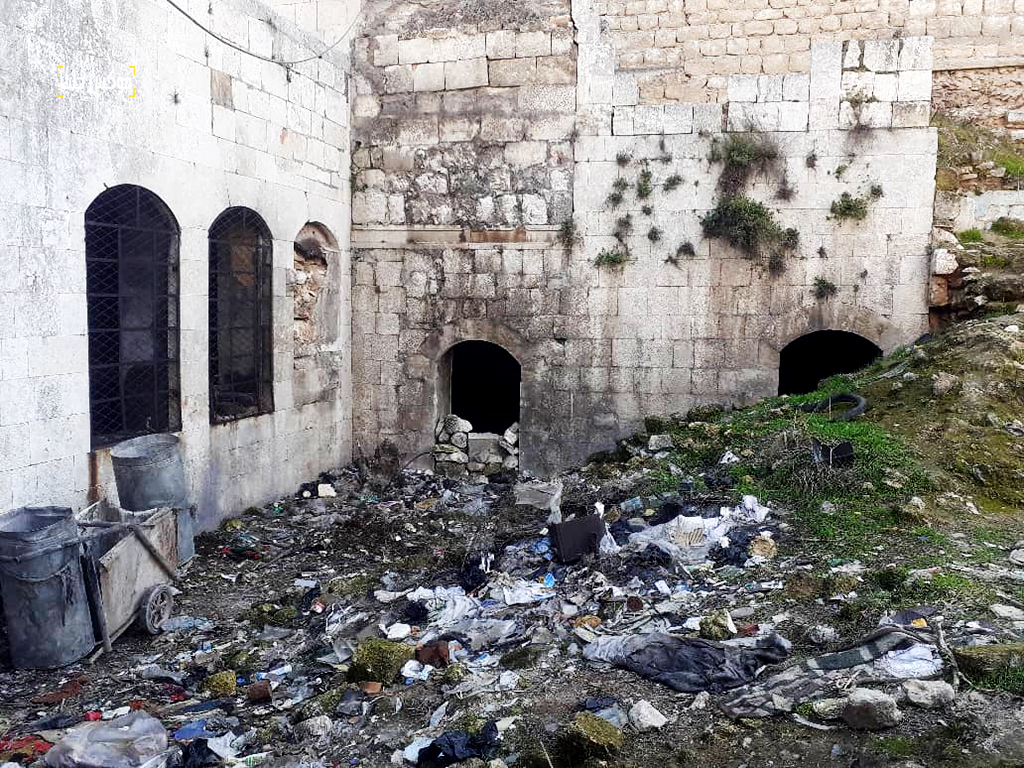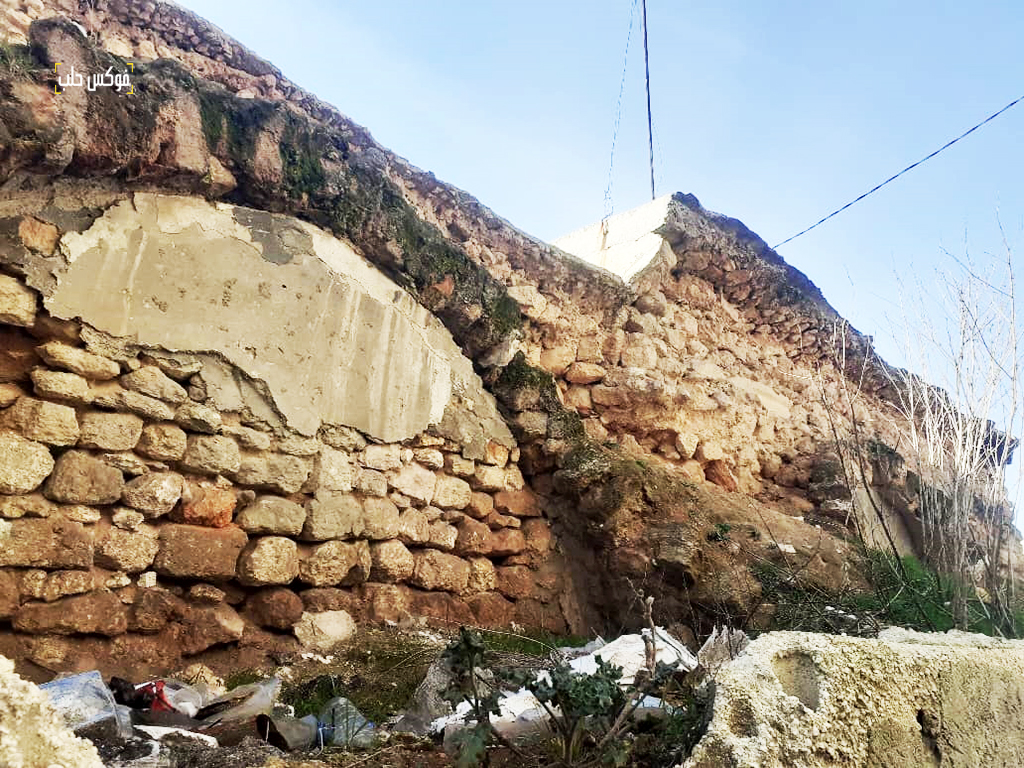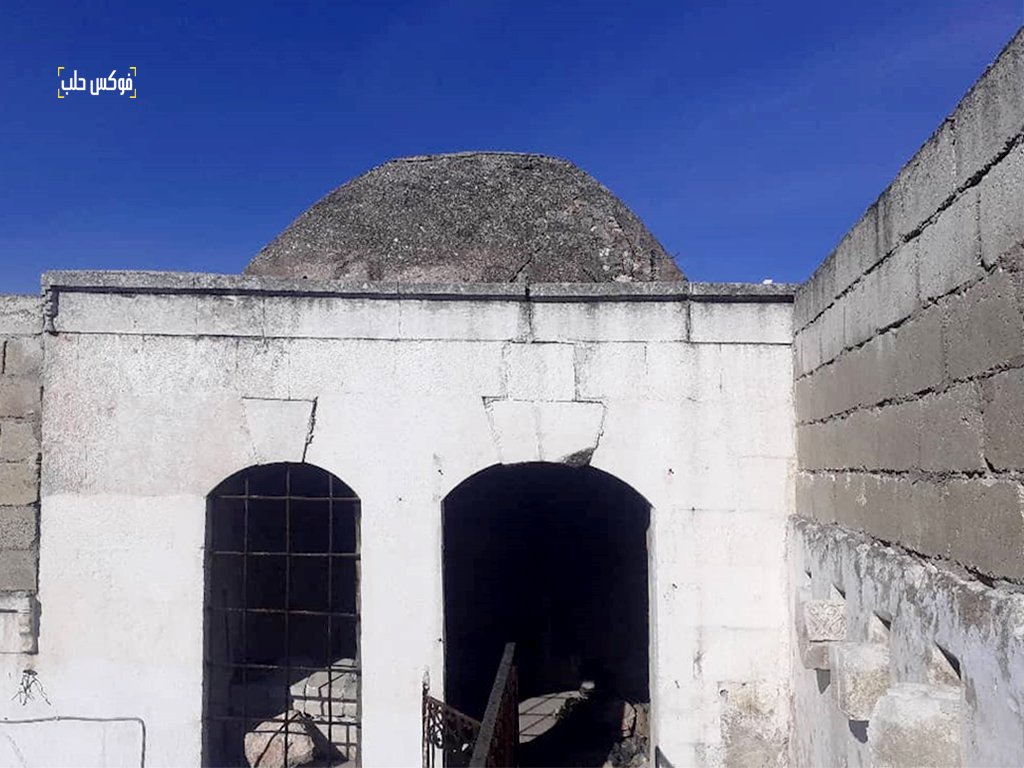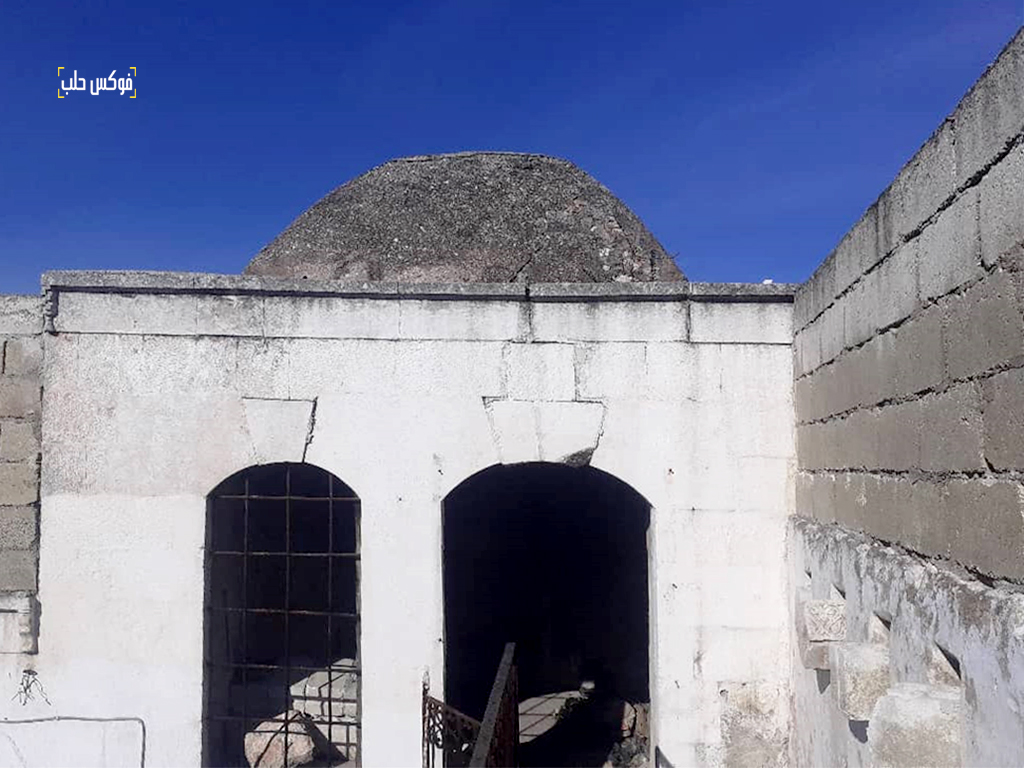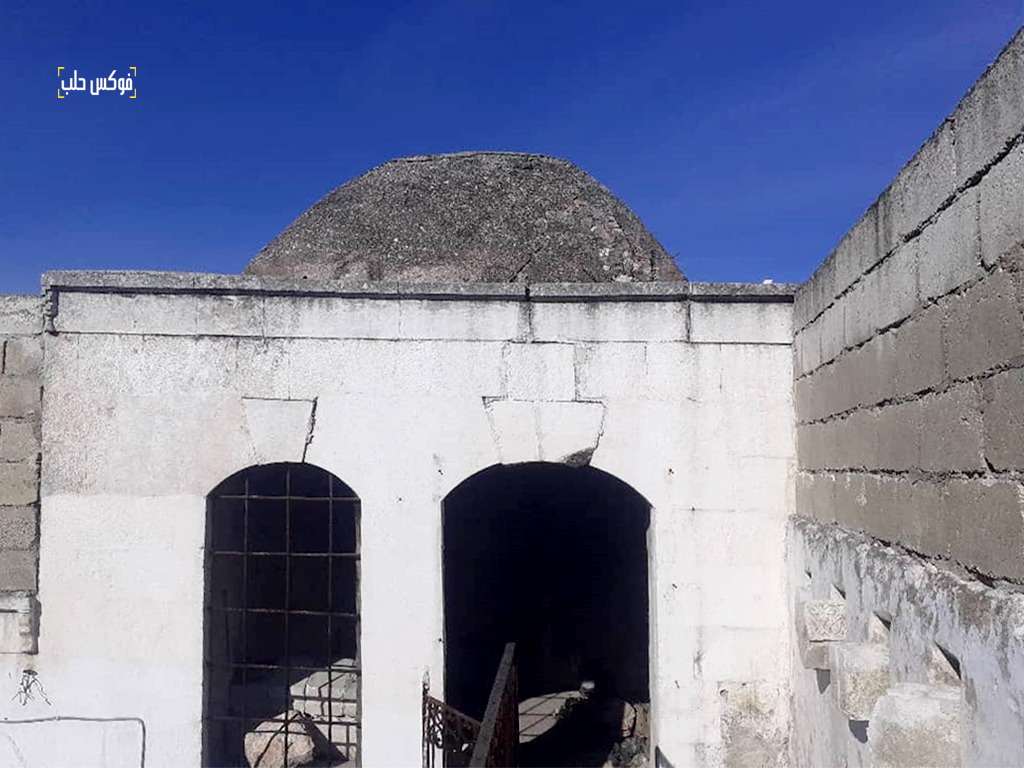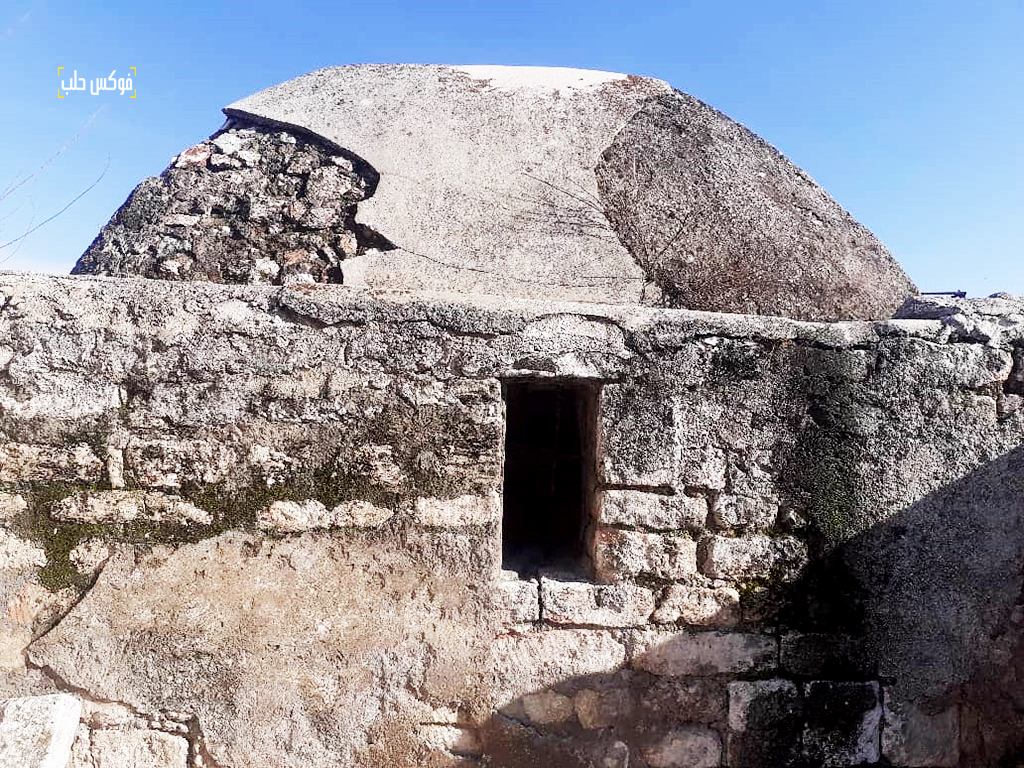Khan Al-Shahadin serves as a scaled-down model of Ottoman caravanserais in Idlib. At its peak, the area was bustling with inns, markets serving all commerce and residential homes, but urban expansion eventually split Khan into two. Commissioned in 1555 by Governor Muhammad Pasha, it was built to provide shelter for impoverished pilgrims – hence the name Shahadin – and to host large commercial caravans.
At its center lies a courtyard paved with black stones imported from Harim, bordered by low chambers covered with elongated vaults. Two opposing iwans, situated on the northern and southern façades, served as gathering spaces for scholars who preached to travelers. Beneath their arches, intricate arabesque engravings frame Quranic verses written in Thuluth script.
The construction of the Antakya asphalt road in 1938 led to a decline in traffic, leaving the khan to gradually deteriorate. The northern corner sustained damage from shelling in 2018, but the arched stones still bear their original inscriptions, making restoration a feasible endeavor.

